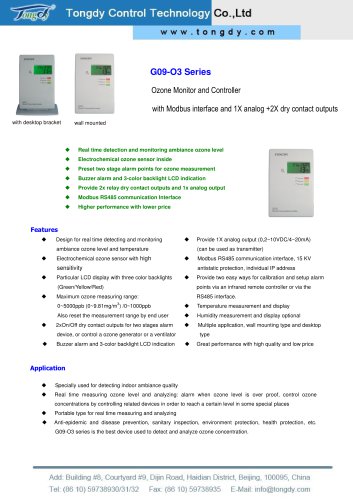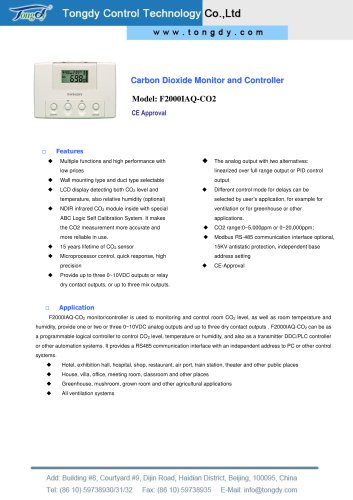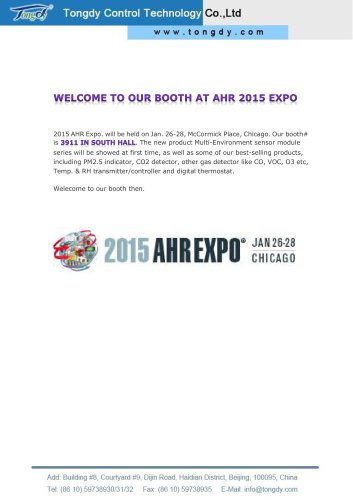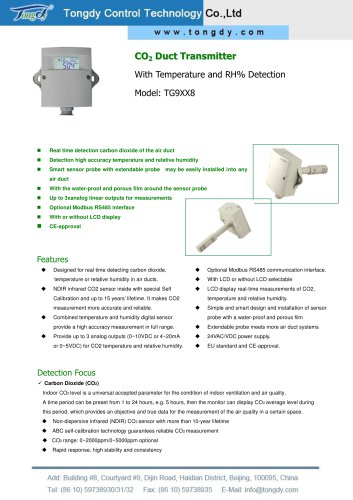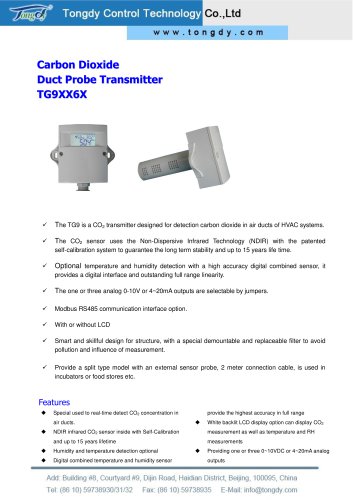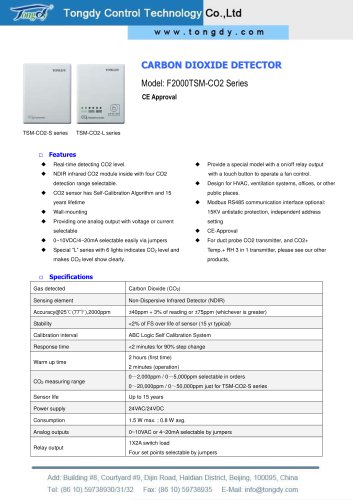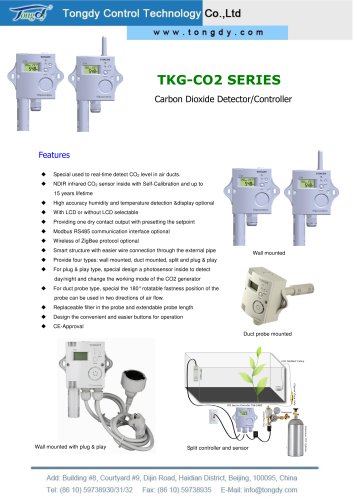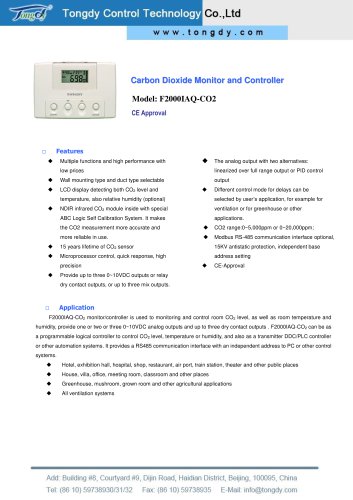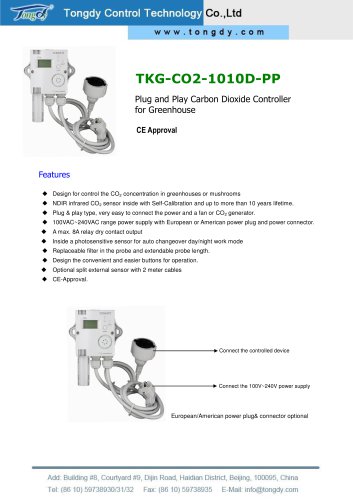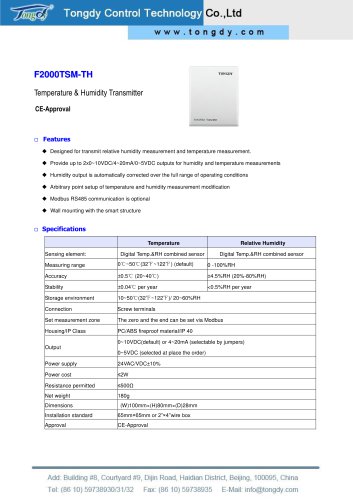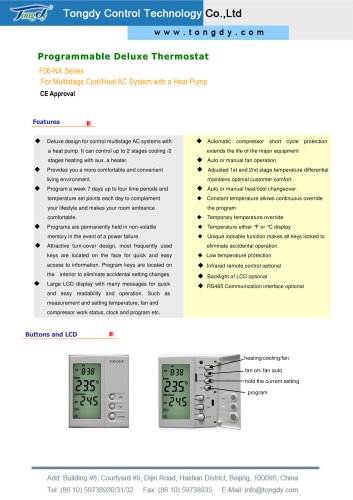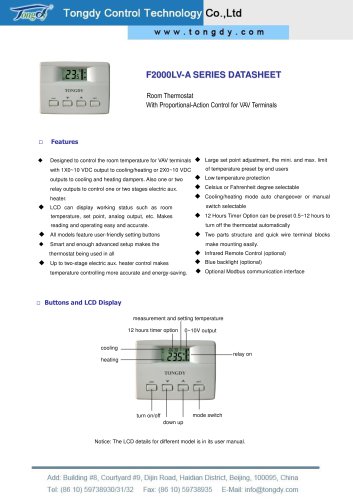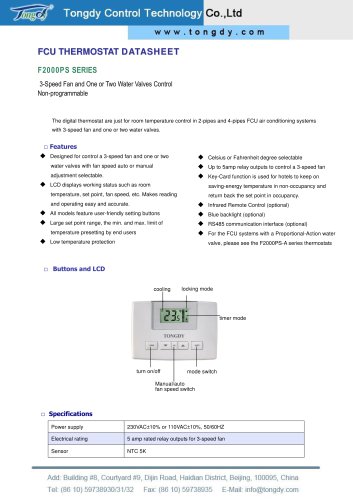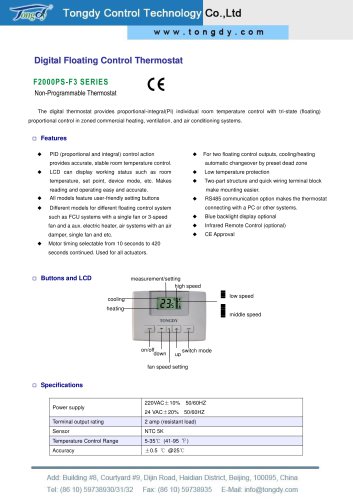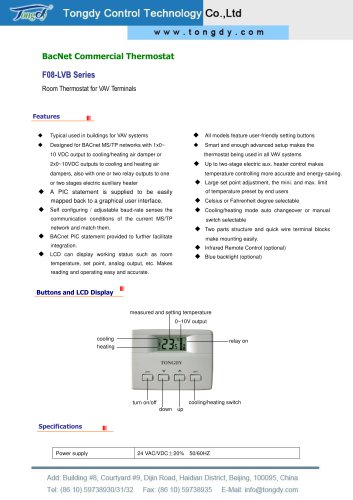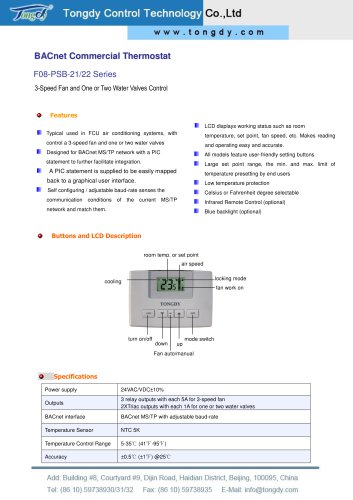 Website:
Tongdy Control Technology
Website:
Tongdy Control Technology
Catalog excerpts

Indoor PM2.5 Indicator —Professional design and high quality Particulate matter (PM) is a particle pollution, which is produced in a great number of ways that can be classified into either mechanical or chemical processes. Traditionally, the environmental sciences have divided particles into two main groups PM10 and PM2.5. PM10 is particles between 2.5 and 10 microns (micrometers) in diameter (a human hair is about 60 micron in diameter). PM2.5 is particles smaller than 2.5 microns. PM2.5 and PM10 have different material compositions and can come from different places. The smaller the particle the longer it can remain suspended in the air before settling. PM2.5 can stay in the air from hours to weeks and travel very long distances because it is smaller and lighter. PM2.5 can get down into the deepest (alveolar) portions of the lungs when gas exchange occurs between the air and your blood stream. These are the most dangerous particles because the alveolar portion of the lungs has no efficient means of removing them and if the particles are water soluble, they can pass into the blood stream within minutes. If they are not water soluble, they remain in the alveolar portion of the lungs for a long time. When the small particles go deeply into the lungs and become trapped this can result in lung disease, emphysema and/or lung cancer in some cases. The main effects associated with exposure to particulate matter may include: premature mortality, aggravation of respiratory and cardiovascular disease (indicated by increased hospital admissions and emergency room visits, school absences, loss of work days, and restricted activity days) aggravated asthma, acute respiratory symptoms, chronic bronchitis, decreased lung function and increased myocardial infarction. There are many varieties of particulate pollutants in our homes and offices. Ones from outside include industrial sources, construction sites, combustion sources, pollen, and numerous others. Particles are also generated by all kinds of normal indoor activity ranging from cooking, walking across the carpet, your pets, sofa or beds, air conditioners etc. Any movement or vibration can create airborne particles! How to improve air quality in your home and office The first thing you need to do is monitoring your indoor air quality everyday. The monitoring information will let you evaluate the indoor air quality. The G03-PM2.5 will let you know if the steps you are taking to improve your air quality are really working or not specially let you know if an $500 air purifier works any better than a $200 one. This will really help you to save money.
Open the catalog to page 1
The concentration of PM2.5 probably have much difference duo to the different purpose of the rooms. The most effective way to improve indoor air quality is, detecting each room and treatment of air purification for the important rooms, such as living room and bed rooms. G03-PM2.5 supply you a real time and accurate information, it can help you to be sharp-eyed and clearheaded. Please make sure the filters of indoor HVAC systems are clean, otherwise need to clean or replace filters. The unclean filter is one of sources of indoor particle pollution. Please notice it’s very important for the...
Open the catalog to page 2
you have the air purifier strapped around your neck it is not the air you are breathing. In fact these built in sensors are essentially a gimmick. G03-PM2.5 indicator is far different from those built in PM2.5 sensors! Built in professional duct sensor with optical IR LED sensing method. Real time monitor indoor PM2.5 concentration. Built in high accuracy temperature & RH sensor, monitor indoor air temperature & RH. Using our unique technology of compensating method, and up to nine calibration points, to guarantee G03-PM2.5 measurements accuracy in different environments. LCD displays the...
Open the catalog to page 3
Storage condition Housing materials PC+ABS materials Temperature and Humidity Parameters Temperature humidity sensor Built-in high precision digital integrated temperature humidity sensor Temperature measuring range Relative humidity measuring range Display resolution PM2.5 Parameters Built-in sensor Dust particle sensor Sensor Type Optical sensing with an IR LED and a photo-sensor Measuring range Display resolution Measuring accuracy1h average ± 10µg+10% of reading Working life >5 years (avoid to close lampblack, dust, great light) <10% measurement decline in five years Comparison of...
Open the catalog to page 4
Air flow Forms natural upward air Forms natural Forms natural heating resistances heating resistances Good stability. control (offset and amplifier shift. Good SNR (signal-to-noise ratio) Digital high accuracy sensor humidity compensation power ripples noise motor noise. motor noise. Manually adjust variable resistances with difficult control. Single color Single color Ordinary accuracy sensor stabilizer, easily adjust gain with zero stabilizer, easily with difficult control. MICOM automatically Unstable. Without the voltage Single color Unstable. Without the voltage variable resistances...
Open the catalog to page 5
Different indoor air detectors for different applications G3-PM2.5 Indicator: To detect indoor PM2.5 pollution G01-CO2 MonitorTo detect and alarm indoor carbon dioxide G02-VOC MonitorTo detect VOC’s such as benzene, formaldehyde, ammonia, alcohol, cigarettes etc. It’s used in newly constructed or newly decorated rooms with some new furniture. Other ozone and VOS’s +CO2 monitors and controllers More information please contact with our sales.
Open the catalog to page 6All Tongdy Control Technology catalogs and technical brochures
-
TSP-CO2 Series
4 Pages
-
MSD
6 Pages
-
TSP-16
4 Pages
-
Ozone Detector/Indicator
2 Pages
-
Ozone Monitor/Controller
2 Pages
-
Wall mount CO2 transmitter
3 Pages
-
Wall mount CO2 transmitter
4 Pages
-
BacNet CO2 Transmitter
3 Pages
-
Multi sensor module
2 Pages










